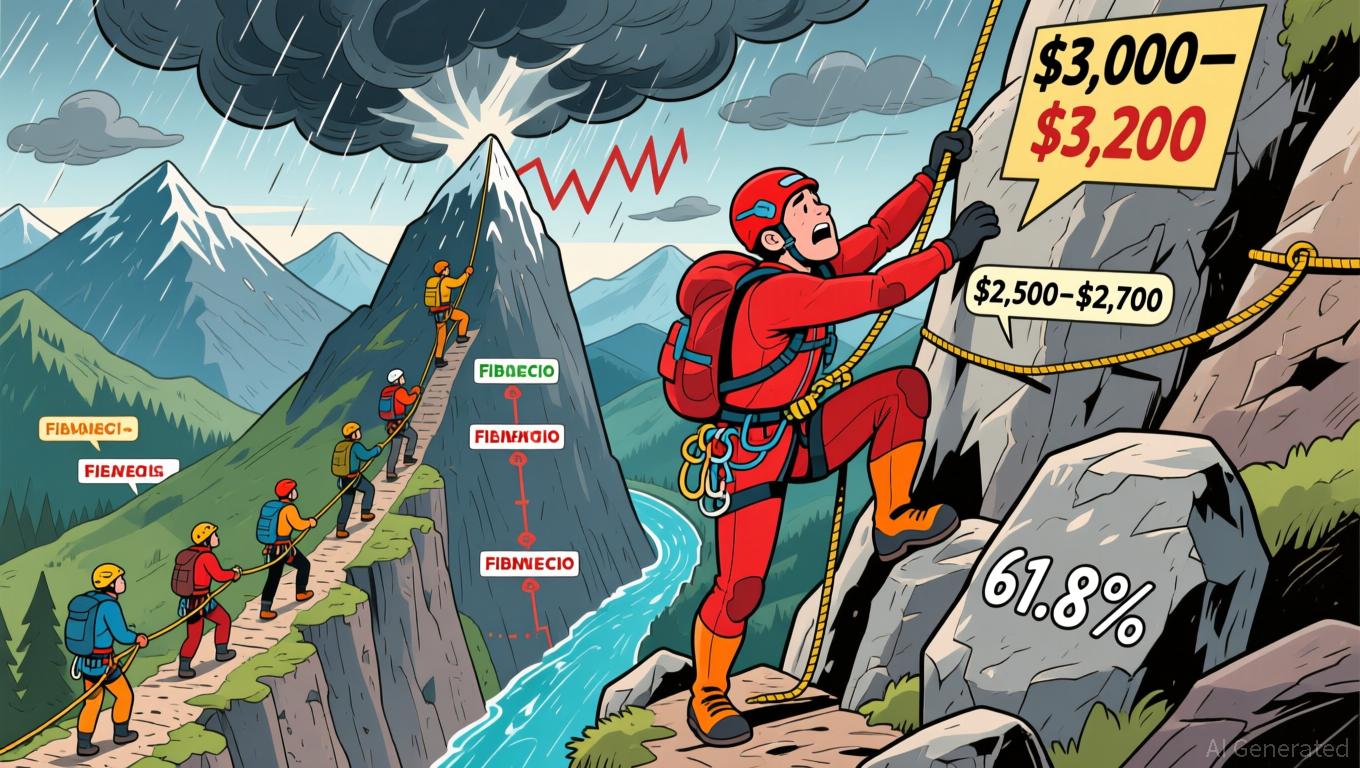Solana News Update: Changing Risk Preferences Lead to Outflows from Solana ETFs
- Solana ETFs recorded first outflows since launch, with 21Shares TSOL losing $34.37M in single-day withdrawals. - Price held near $141 despite bearish technical indicators and 20% drop in network TVL to $9.1B. - Institutional holdings remain strong at 6.83M tokens ($964M), but Upbit hack amplified short-term volatility. - Market recovery hinges on Fed's December rate decision and Solana's ability to stabilize key metrics.
Solana ETFs Record First Outflows, Signaling Shift in Institutional Interest
For the first time since their launch, Solana's spot exchange-traded funds (ETFs) have experienced net outflows, indicating a change in institutional sentiment toward the altcoin. On Wednesday, the 21Shares Solana ETF (TSOL) reported a significant net withdrawal of $34.37 million—the largest single-day outflow for this product to date. This contributed heavily to a total group outflow of $8.1 million, ending a 17-day streak of consistent inflows that had previously pushed cumulative net inflows to $476 million. Much of this earlier capital had been driven by Bitwise’s BSOL ETF. The recent outflows reflect a broader reallocation of investor funds across the cryptocurrency sector, as market volatility influences risk preferences.
Price Action and Technical Analysis
Despite the reversal in ETF flows, Solana's price remained stable around $141, posting a 3.5% gain over the day. However, technical signals suggest caution. The token is still trading below important moving averages, with the 50-day and 200-day exponential moving averages at $173 and $180, respectively. The MACD indicator, while still negative, is showing signs of improving momentum, and the Relative Strength Index (RSI) at 38 points to weak buying interest. Analysts have warned that if Solana fails to hold above the $140 support level, it could face a deeper pullback to $120, and potentially as low as $100 if bearish patterns persist on the six-hour chart.
Broader Ecosystem Weakness
The ETF outflows have coincided with a general downturn in Solana’s ecosystem. The total value locked (TVL) on the network has dropped by 20% this month, now standing at $9.1 billion. Major protocols such as Jito and Jupiter have both experienced double-digit declines in liquidity. Network engagement has also decreased, with active wallet addresses falling by 6% and transaction fees dropping 16% over the past week. These declines contrast with the continued inflows seen by XRP ETFs, which have remained resilient despite the wider market slump.
Institutional Holdings Remain Strong
Despite recent setbacks, institutional interest in Solana remains substantial. Data from the Solana Strategic Reserve shows that Solana ETFs collectively hold 6.83 million tokens, valued at approximately $964 million. On Wednesday, Bitwise’s BSOL ETF attracted an additional $13 million in inflows, while Grayscale’s GSOL and Fidelity’s FSOL also saw smaller increases. Some analysts remain optimistic about Solana’s long-term prospects, citing robust on-chain activity and a proposed plan to reduce inflation as potential drivers for future price growth through 2026.
Security Incident Adds to Market Uncertainty
Market confidence was further shaken by a security breach at Upbit, where $36 million was stolen from the exchange’s Solana hot wallet on November 27. Although Upbit has committed to reimbursing affected users, the incident temporarily froze liquidity and heightened short-term volatility.
Looking Ahead: Macro Factors and Recovery Prospects
The direction of the crypto market may soon be influenced by the Federal Reserve’s upcoming December rate decision. With a 70% chance of a 25-basis-point rate cut, risk appetite could return, potentially benefiting assets with strong institutional backing. However, analysts caution that any rebound is likely to be selective, favoring projects with clear utility and regulatory certainty. For Solana, a sustained recovery will depend on improving network fundamentals, reversing the recent ETF outflows, and reclaiming critical technical levels.
Disclaimer: The content of this article solely reflects the author's opinion and does not represent the platform in any capacity. This article is not intended to serve as a reference for making investment decisions.
You may also like
CME Suspension: Global Market Vulnerabilities Revealed by Thermodynamic Constraints
- CME Group halted Globex trading on Nov 28, 2025 due to CyrusOne cooling system failure in Chicago, freezing 90% of global derivatives markets. - The outage caused erratic price swings in gold/silver and disrupted EBS forex platforms, exposing vulnerabilities in third-party data center reliance. - Despite post-holiday timing softening immediate impact, the incident highlighted systemic risks from thermodynamic limits in AI-era infrastructure. - CME faces pressure to build redundant systems as it expands c

Turkmenistan's Approach to Cryptocurrency: Navigating Government Oversight and Public Confidence
- Turkmenistan will implement strict crypto regulations from 2026, requiring miner registration, exchange licensing, and anti-money laundering protocols under President Berdimuhamedov. - The framework mirrors Central Asian neighbors' approaches but prohibits anonymous transactions, national symbols in branding, and hidden mining operations. - While aligning with global crypto oversight trends, the law maintains state control over digital assets, raising questions about market viability amid Turkmenistan's

Ethereum Updates Today: Institutional Optimism Meets Technical Challenges: The Pivotal Moment for Crypto
- Ethereum and XRP face critical technical junctures on Nov 28, 2025, with ETH testing $2,500–$3,200 support and XRP hovering near $2.30 amid mixed signals. - Bitcoin's bearish trend (50-day EMA at $100,937) contrasts with JPMorgan's "tradable macro asset" designation, potentially attracting institutional capital. - Solana's BONK memecoin launches a physically-backed ETP on SIX Swiss Exchange, bridging meme coins and traditional markets amid SOL's $140 support risks. - Market dynamics highlight institution

How a Query from an Office Supplies Specialist Transformed a $12 Billion Trucking Approach
- A non-trucking board member's question prompted Ryder System to shift focus from leasing to targeting 80-85% of companies owning their own trucks. - The strategic pivot aligns with growing demand in long-haul freight driven by e-commerce, trade agreements, and tech innovations like IoT fleet management. - Industry consolidation and sustainability trends, including electric trucks, are reshaping competition as firms expand specialized services like temperature-controlled logistics. - Ryder's experience hi
